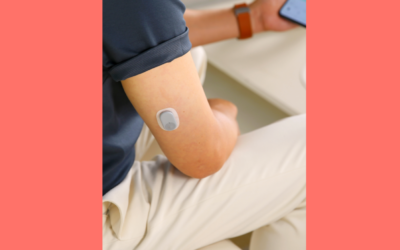By Sophie Davis-Cooper on July 29, 2020
Over the last few years, virtual care technology has been propelled into the limelight as one of the essential tools for tackling the increasing strain on NHS resources while ensuring patients receive quality care. In this article, we dive into four of the biggest ways virtual care is supporting the NHS.
“But just because COVID is in retreat, it doesn’t mean that this digital transformation agenda should be too.” – Sajid Javid, Health and Social Care Secretary
As set out in the NHS England planning guidance, there will be a large focus on making better use of data and digital technology to get the most value for patients and provide better support for staff. It also outlines the need for the expansion of virtual ward models to help ensure patients are offered the ‘right care, at the right time, in the right setting.’
Although it can be argued that COVID-19 is responsible for the rapid adoption of digital healthcare, the wide range of benefits of digitalisation existed before the pandemic and will exist and continue to multiply long after.
- Extends capacity
One of the most important elements of virtual care is remote monitoring. The key benefit of remote monitoring is that it promotes a preventative approach to healthcare and strives to reduce unplanned hospital admissions.
By enabling clinicians to check up on patients on a regular basis in ‘virtual wards’ they can flag any potential issues and prevent patients requiring emergency services. As a result, this can drastically increase capacity for the NHS by reducing A&E activity.
The capability to track patients’ health also allows healthcare providers to discharge patients earlier than usual, releasing more beds.
Our investigation into the ‘Combined interventions for chronic obstructive pulmonary disease (COPD) admissions within an urban setting’ found that the use of remote monitoring reduced hospital admissions, within a sample group, from 222 to 74 over a 12-month period[1].
Another study looking at caring for COVID-19 patients on a virtual ward found that the mean length of stay reduced by 40.3%.

- Saves time, money and resources
By allowing clinicians to speak to patients without meeting in person, it reduces travelling time and thus enables them to manage more patients simultaneously. Time is a precious resource especially for an understaffed workforce, so embracing digital solutions that make processes quicker, easier, and more convenient is crucial.
Virtual care can optimise NHS resources by supporting the management of long-term conditions. From video call consultations to empowering patients to self-manage at home, digital technology can help reduce hospital visits and enable early discharges. Considering that patients with long term conditions make up an estimated 50% of GP appointments, 64% of outpatient appointments and over 70% of inpatient bed days, improving how long-term conditions are managed is vital in order to save costs and resources[2].
Our investigation into caring for COVID-19 patients via a virtual ward generated a mean saving per patient of £1,047, by enabling patients to be safely discharged sooner. This is just one example of how virtual care can improve the lives of patients while saving costs [4].
“From our evaluations looking at remote monitoring of COPD patients, we have a great deal of evidence showing that the technology significantly reduces unplanned admissions. On average, the solution reduced admissions by two-thirds and this has been followed up 12 months post-discharge from CliniTouch Vie.
We know that patients who are consistently frequently admitted continue to be so over time, so we know that these changes are real. This alone made CliniTouch Vie cost-saving.
Helping structuring and prioritising information for healthcare professionals reduced unnecessary face-to-face patient interactions, travel time, and helped clinicians utilise their time more effectively.”
Jim Swift, Wee Health Economissionist, Spirit Health

- Aids communication
One of the greatest benefits of digital virtual care is its ability to improve communication between healthcare professionals and patients. Offering multiple channels of communication including video, phone and instant messaging, digital health platforms help patients get advice and care faster without having to leave the comfort of their own homes.
This is especially significant for patients who live in remote areas and do not have easy access to healthcare facilities. As highlighted in the NHS’ document on ‘Improving access for all: reducing inequalities in access to general practice services’, patients who have poorer access to health services have poorer outcomes which can adversely impact their life expectancy[3]. Thus, providing patients with easier access to clinicians with technology can provide better outcomes and prevent their life expectancy being negatively affected.
Digital communication can also facilitate and enhance interactions between healthcare providers themselves. For example, remote monitoring platforms can create a direct link between care homes and GPs to support the daily observation and care of residents. Enabling carers to quickly update GPs on the residents’ conditions, the providers can work together more efficiently to spot deterioration and prevent unplanned hospital admissions.

- Improves patients’ lives
Arguably the most meaningful way digital is supporting healthcare, is by helping the NHS significantly improve the lives of patients. Particularly for patients with long term conditions, by reducing the number of doctor and hospital appointments required, the patients are empowered to be more independent and lead relatively ‘normal’ lives. Whether it means allowing a patient to rest in the comfort of their own home or enabling a patient to continue with full-time work with less interruptions, virtual care can enhance their quality of life.
Virtual care is also capable of providing education for patients to help them take control of their conditions, manage symptoms more effectively and prevent future complications. Our study into the ‘Combined interventions for COPD admissions within an urban setting’ found that patients who used CliniTouch Vie, which offers educational resources, were more knowledgeable about their condition, more confident in managing it and motivated to adopt positive behaviour to improve their health[2].
The Future
“We have seen the brilliant use of virtual wards throughout this pandemic and I’m pleased that the recent NHS England planning guidance gave them a very important role too.”
Sajid Javid, Health and Social Care Secretary
As we look forward, it will be exciting to see how the NHS is transformed by digital solutions & the expansion of virtual wards. As a proud partner of the NHS, we look forward to implementing digital technology into even more health systems to help provide smarter, safer and more efficient care.
Find out more about virtual wards here.
Sources
[1] Combined interventions for COPD admissions within an urban setting.
[2] Department of Health. 2012. Long-term conditions compendium of Information:3rd edition. London: The Kings Fund.
[3] Improving access for all: reducing inequalities in access to general practice services
[4] A cost saving intervention for patients with severe breathlessness


